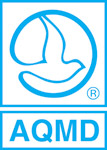When we talked to the Air Quality Management District about writing about air pollution, we wanted to know how teens could help reduce pollution. We were excited to learn that there’s a lot that teens can do. Driving less is the biggest thing you can do because exhaust from cars and other vehicles is responsible for more than half of the smog in our region. There are other steps you can take, too. Using less energy helps because some of the energy used to power electronics, turn on lights and heat water comes from air-polluting power plants. Another thing you can do is unplug TVs, computers and phone chargers when you’re not using them because electronics that are turned off but plugged in still use a little energy. So we challenged our staff to drive less and use less energy for one week. They all said that they think they can keep it up.
I wanted to participate in this challenge because I usually don’t think about air pollution or conserving energy. I know I should, but sadly it’s not on my list of priorities.
My school is about one mile from my house, but despite this my mother always gives me a ride. On the first day of the challenge I decided to walk. It took me about 15 minutes and I arrived to first period sweaty. I tried again and walked home after school the next day, but it was the same thing. I arrived home exhausted.
Trying to walk to and from school was a failure for me. I only did it twice. I didn’t like that I had to leave my house an extra 10 minutes early when my mom could easily drive me there in five.
I also took shorter showers. Instead of taking my usual 30-minute showers, I now take 15-minute showers. I used to stand there and let the water run on me, relaxing and thinking back on the day. My main goal was to get in and out of the shower as quickly as possible and it worked.
Participating in this challenge made me realize that little things can help. Although the challenge is over, I will continue taking shorter showers and maybe I’ll try walking to school again in May, when the weather is nicer and I can wear a dress and feel cooler.
Jessica Marin, 17, Culver City HS
 |
 |
l
I did the challenge because I wanted to see if I could do more to save energy and help the air and environment. It was impossible—I couldn’t find anything to do. I already take two-minute showers and unplug things I’m not using, like the TV in my room and my radio. It’s the way I was raised. We don’t use a lot of electricity. If we get cold, we grab a blanket; if it’s too warm we open the windows. We try to save money.
But when I noticed my brother being the biggest energy hog I’ve seen, this challenge became about making him change even though he’s stubborn. Every time I asked him to unplug the unused phone charger or told him that he didn’t need two TVs on in his room (one is his regular TV and the other one is an LCD TV for watching movies or playing video games), he’d reply “I need them” or just ignore me. On the fourth day, he was tired of me bugging him. He yelled at me, telling me that it wasn’t his responsibility to try to save the world when everyone else was doing whatever they wanted and weren’t thinking about the earth. I yelled back that it wasn’t just about the environment, to at least try to save money. He pointed out that he doesn’t pay the bills, so I left his room.
For the next three days I was hoping he would change, but of course he didn’t. Maybe I’ll keep trying to change him, little by little, but for now I feel like I failed this challenge.
Cristian Salas, 16, Equal Partnership HS (Long Beach)
 |
 |
l
On Sunday, when I started the challenge, my dad and I replaced the six dead light bulbs in our house with compact fluorescent ones. I asked him to buy more environmentally friendly bulbs because of the challenge. My dad agreed, saying it was something that he had wanted to do.
I started making sure I turned the light off in a room when I was leaving, but my brother always leaves his bedroom light on when he isn’t in there. I mentioned to him that he should be more aware of the energy he wastes, but he kept forgetting, so I checked his room and others periodically. I also made sure to turn off the TV when no one was watching it, because my dad leaves it on sometimes. After a few days, these routines became second nature.
I continued to walk to school like I always do, but to reduce air pollution I arranged to carpool home from water polo practice with my neighbor. Every other day, one of our parents would come pick both of us up. She thought this was a great idea, and so did her parents, because it was less driving for everyone. We’re still carpooling now that the challenge is over. At the end of my week, I was surprised how easy it had been.
Heather Vaughan, 14, South Pasadena HS
 |
 |
 |
Click here to read:
Brian’s story about how our smoggy air affects his asthma.
l
 This special package is funded by the South Coast Air Quality Management District. Los Angeles has some of the dirtiest air in the country, which means that many days we’re breathing in smog that is bad for our health. What is smog? Smog refers to all the pollutants in the air. There are several air pollutants, including some that are colorless (so you can’t always tell how smoggy the air is just by looking at it). Driving is a big source of air pollution. Other sources are power plants, emissions from businesses and dust. Los Angeles air has gotten cleaner, but there were still 100 days last year when the air quality was not healthy. In this special package you can learn more about smog, including what you can do to help reduce pollution.
This special package is funded by the South Coast Air Quality Management District. Los Angeles has some of the dirtiest air in the country, which means that many days we’re breathing in smog that is bad for our health. What is smog? Smog refers to all the pollutants in the air. There are several air pollutants, including some that are colorless (so you can’t always tell how smoggy the air is just by looking at it). Driving is a big source of air pollution. Other sources are power plants, emissions from businesses and dust. Los Angeles air has gotten cleaner, but there were still 100 days last year when the air quality was not healthy. In this special package you can learn more about smog, including what you can do to help reduce pollution.



